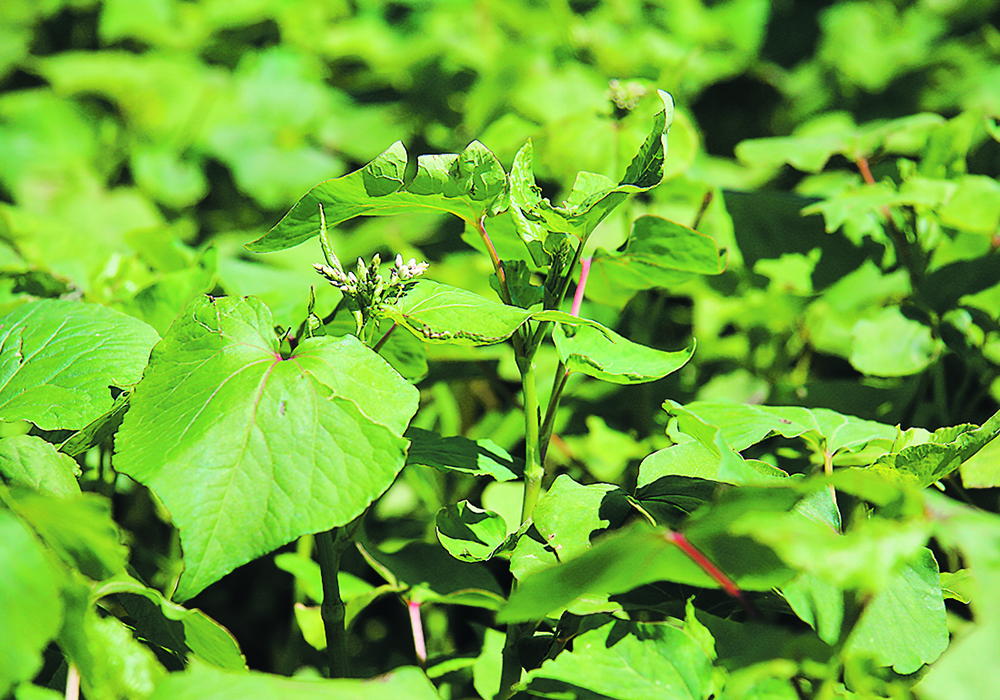Every year, Manitoba Agriculture publishes a Crop Production Guide with detailed data on the costs and potential profits from 17 crops.
Buckwheat wasn’t one of the 17 crops in the 2023 guide, mostly because it has a tiny share of acreage in Manitoba. About 5,000 acres of buckwheat are seeded in the province every year.
However, if buckwheat was included in this year’s production guide, it might have been the most profitable crop of 2023.
This winter and spring, buyers have been offering farmers more than $24 per bushel to produce buckwheat in Western Canada.
Read Also

Farm groups ask feds for export sales reporting
The Agricultural Producers Association of Saskatchewan and SaskCrops asks the federal government to create an Export Sales Reporting program.
“$24.50 (per bu.) for conventional and $30.25 for organic,” said Don Fyk, who runs Fyk Soba in Garland, Man., with his brother Ben.
Fyk Soba operates a buckwheat de-hulling plant in Garland, northwest of Dauphin, and is a major buyer of buckwheat in Western Canada.
Fyk contracts production with growers across the Prairies. Much of that buckwheat is shipped to Birkett Mills, a firm in western New York that makes buckwheat groats, flour and pancake mix. The miller buys buckwheat from producers in Ontario, Quebec, North Dakota and Western Canada.
“More and more people are looking for the ancient grains, gluten-free and nutrition — all the things that come with buckwheat,” Cliff Orr, a vice-president with Birkett Mills, told The Western Producer in 2018.
Buckwheat prices have increased over the last couple of years. In 2021, prices were around $17 per bu. in Western Canada.
At a price of $24.50, it was slightly easier for Fyk and other buyers to make a sales pitch for buckwheat this winter. Assuming a producer can achieve a yield of 20 bu. per acre, the gross income from buckwheat would be $490 per acre. Plus, buckwheat requires less nitrogen fertilizer than other crops and seed costs are relatively low.
However, even with strong prices and favourable margins, it’s still difficult to convince producers to plant buckwheat.
“A lot of farmers have become so big,” Fyk said. “Some of these guys, if they can’t plant 1,000 or 2,000 acres of a specific crop, they don’t want to be bothered.”
Buckwheat acres were down in 2022, possibly because of the extremely high prices for canola and other crops. When canola is at $20 per bu., why would a farmer dedicate 160 acres to buckwheat?
In Manitoba, the provincial crop insurer reported only 2,700 acres of buckwheat in 2022. That’s down from 5,000 -6,000 acres in 2019-21.
Acres in Western Canada will likely rebound this year, but it’s too early for an official estimate, Fyk said.
“I do have a (group) of growers that are very dedicated.
“The people I’m dealing with remember that their dad grew buckwheat. (Also) there are a lot of organic farmers in Saskatchewan that are using buckwheat as a rotational crop.”
It’s difficult to predict if buckwheat production will increase on the Prairies over the next five to 10 years, but more consumers are seeking the healthy grain.
“It (demand) goes up about 10 to 15 percent per year. I’ve noticed that through my sales,” Fyk said.
Researchers at the Canadian Centre for Agri-Food Research in Health and Medicine, or CCARM in Winnipeg, have determined that buckwheat reduces glucose levels and could be used to manage diabetes.
More work is required, but a health claim saying it helps with diabetes could push demand higher.
“That’s the game that we’re going for,” said Peter Zahradka, a CCARM researcher, in 2020.
“If you can get some sort of health claim for it… then more people will want to eat it.”
















